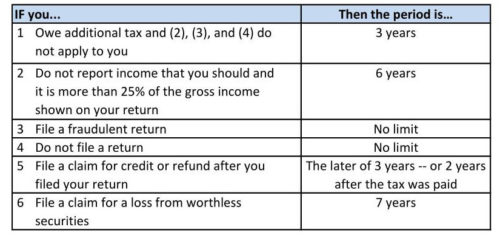Investors commonly think about their wealth in terms of money. We say that a person is worth so much money even if their actual assets are stocks, bonds, real estate, commodities or whatever. Their value is assessed in dollars which makes it very easy to convert from one asset type to another or to transfer assets from one person to another. In this article, we’ll take a look at the history of money – in the United States in particular. (For convenience, I’ve divided the material into two parts. The second part of the story will appear next month.)
The Origins of Money
Before we had money, people swapped one asset for another – maybe a cow for some grain. However, this was cumbersome and complicated in that the person with the cow needed to find someone with grain who wanted a cow. Maybe a third party needed to become involved so that the cow could be traded for a wagon which could be traded for the grain. It worked, but you can see how much easier life is today with money.
The history of money is actually pretty interesting. Coins came first. The Zhou dynasty in China had something called spade money around 1000 BC. The first manufactured coins seem to have appeared separately in India, China and the cities around the Aegean Sea in about 700 BC. It is believed that all modern coins are descended from the coins that appear to have been invented in the kingdom of Lydia in Asia Minor somewhere around 700 BC. Disk-shaped coins followed and spread throughout Greece. They were made of gold, silver, bronze or imitations thereof, with both sides bearing an image produced by stamping — one side is often a human head.
The Colonies
Okay, fast forward to the American colonies. Barter certainly still had a role. Who hasn’t seen a movie where French trappers are exchanging blankets, beads or even weapons for beaver skins? The colonists tried various kinds of money. This included British money (which was in very short supply) and notes based on mortgaged land. It’s an interesting historical footnote that the most common coin in the colonies for a while was the Spanish pieces of eight.
During the Revolution
These approaches got us by until the revolution began. Then we needed our own form of money. Enter Continental currency (1775-1790). It coexisted with state issued currency and with British supplied counterfeit bills which were used as a form of economic warfare. By the end of the war, the Continental currency became so depreciated that the saying “it’s not worth a Continental” was in common usage.
After the collapse of Continental currency, Congress appointed Robert Morris to be Superintendent of Finance of the United States. Morris advocated the creation of the first financial institution chartered by the United States, the Bank of North America, in 1782. The bank was funded in part by bullion coins loaned to the United States by France. Morris helped finance the final stages of the war by issuing notes in his name, backed by his personal line of credit, which was further backed by a French loan of $450,000 in silver coins. The Bank of North America also issued notes convertible into gold or silver. Morris also presided over the creation of the first mint operated by the U.S. government, which struck the first coins of the United States — the Nova Constellatio patterns of 1783. So, thanks to Robert Morris!
Post-Revolutionary Coins – Part 1
After the Revolutionary War, the Articles of Confederation governed the country. The Articles allowed each state to make their own coins and set values for them, in addition to the foreign coins already circulating. This created a confusing situation, with the same coin worth different amounts from state to state.
In 1787, after much debate about national coinage, Congress authorized the production of copper cents. Called Fugio cents (designed by Benjamin Franklin), the coins featured a sundial on the obverse and a chain of 13 links on the reverse. However, the following year, a majority of states ratified the Constitution, establishing a new government and creating a new debate over national coinage.
The Coinage Act of 1792 established a national mint located in Philadelphia. Congress chose decimal coinage in parts of 100, and set the U.S. dollar to the already familiar Spanish milled dollar and its fractional parts (half, quarter, eighth, sixteenth). This resulted in coins of the following metals and denominations:
Copper: half cent and cent
Silver: half dime, dime, quarter, half dollar, and dollar
Gold: quarter eagle ($2.50), half eagle ($5), and eagle ($10)
In 1792, during construction of the new Mint, 1,500 silver half dimes were made in the cellar of a nearby building. These half dimes were probably given out to dignitaries and friends and not released into circulation. The Mint delivered the nation’s first circulating coins on March 1, 1793: 11,178 copper cents.
These new cents caused a bit of a public outcry. They were larger than a modern quarter, a bulky size for small change. The image of Liberty on the obverse showed her hair steaming behind her and her expression “in a fright.” The reverse featured a chain of 15 links, similar to the Fugio cent. However, some people felt that it symbolized slavery instead of unity of the states. The Mint quickly replaced the chain with a wreath, and a couple months later designed a new version of Liberty.
Although individual states were no longer authorized to produce coins, legislation temporarily allowed certain foreign coins to continue to circulate until the Mint released enough coins to handle the country’s needs.
Unfortunately, the Mint struggled with putting enough coins into circulation. Copper cents enjoyed relatively stable production, but not in high enough numbers. This was partly due to the rise in the cost of copper. In 1857, Congress discontinued the unpopular half cent and made the cent smaller to cut back on the amount of copper needed.
Coinage of silver and gold coins started in 1794 and 1795. But at first, these coins didn’t circulate. The Coinage Act of 1792 set the ratio of silver to gold at 15:1, which was different than the world market. U.S. gold coins were undervalued compared to silver, so they were exported and melted. Silver dollars were also exported for use in international trade or stored as bullion.
During the early 19th century, depositors such as banks supplied the silver and gold for coining and chose which coins they wanted back. Their preference was for the largest denominations of each metal. The Mint rarely coined the smaller denomination silver coins – half dimes, dimes, and quarters – needed for daily transactions.
In an effort to bring gold and silver coins into circulation, Congress passed various Acts to discontinue the silver dollar and gold eagle, and to change the weight of coins and ratio of gold to silver. With the help of these laws, new coining technology, and the opening of branch Mints around the country, production increased. Smaller denominations entered circulation in great enough numbers to provide for the country’s needs. Finally, with the passage of the Coinage Act of 1857, Congress banned foreign coins as legal tender.
To be continued…
I hope you enjoyed the first part of this brief overview of the history of our money. Next month we’ll wrap up our look at coins and get into the fascinating history of currency after the American Revolution. If this has gotten you thinking about your own personal wealth, we’d be glad to sit down and talk about your financial matters in a no-charge, no-obligation initial meeting. Please visit our website or give us a call at 970.419.8212 to set up an in-person or virtual meeting.
This article is for informational purposes only. This website does not provide tax or investment advice, nor is it an offer or solicitation of any kind to buy or sell any investment products. Please consult your tax or investment advisor for specific advice.




